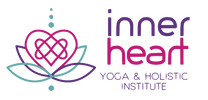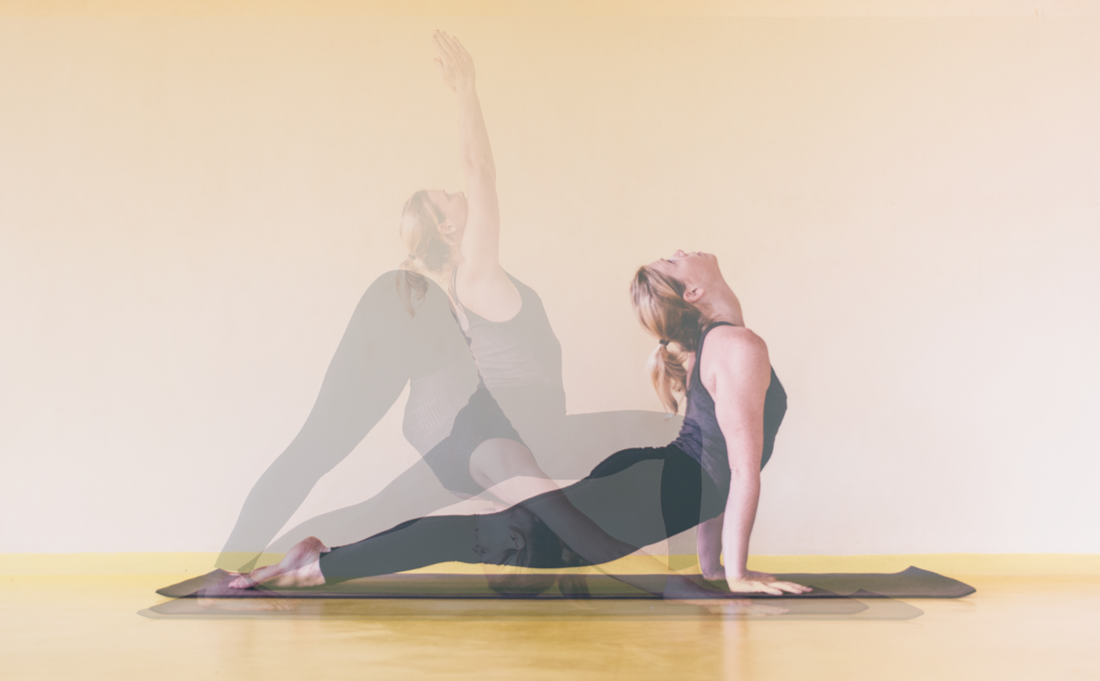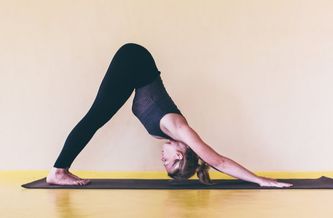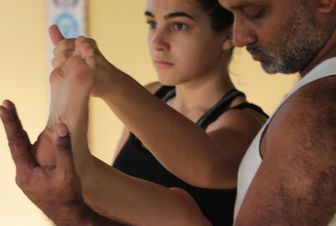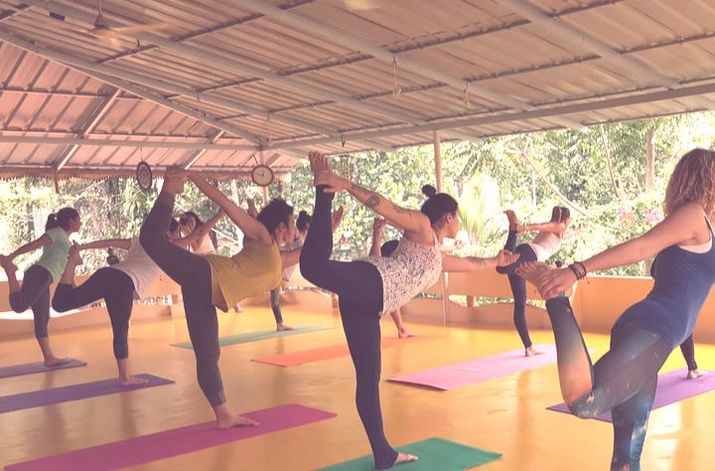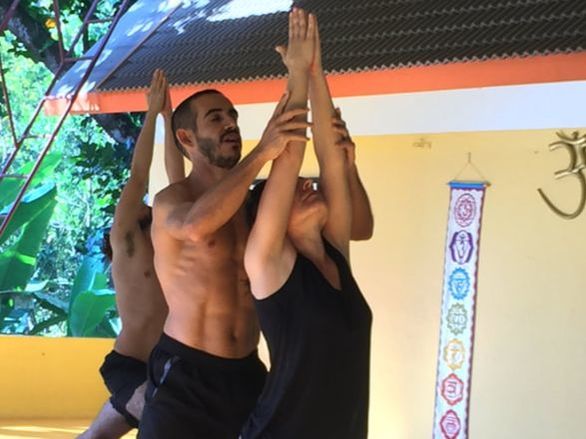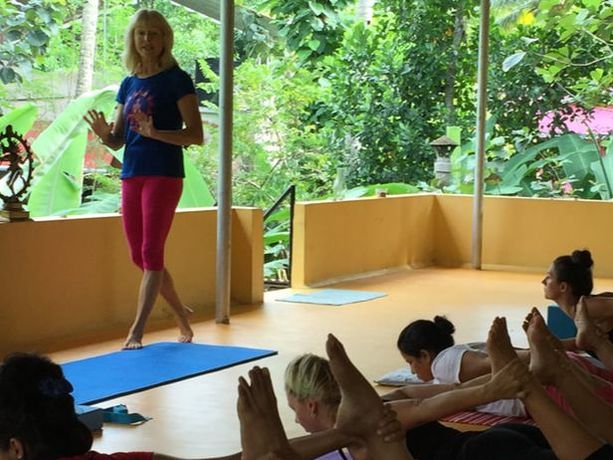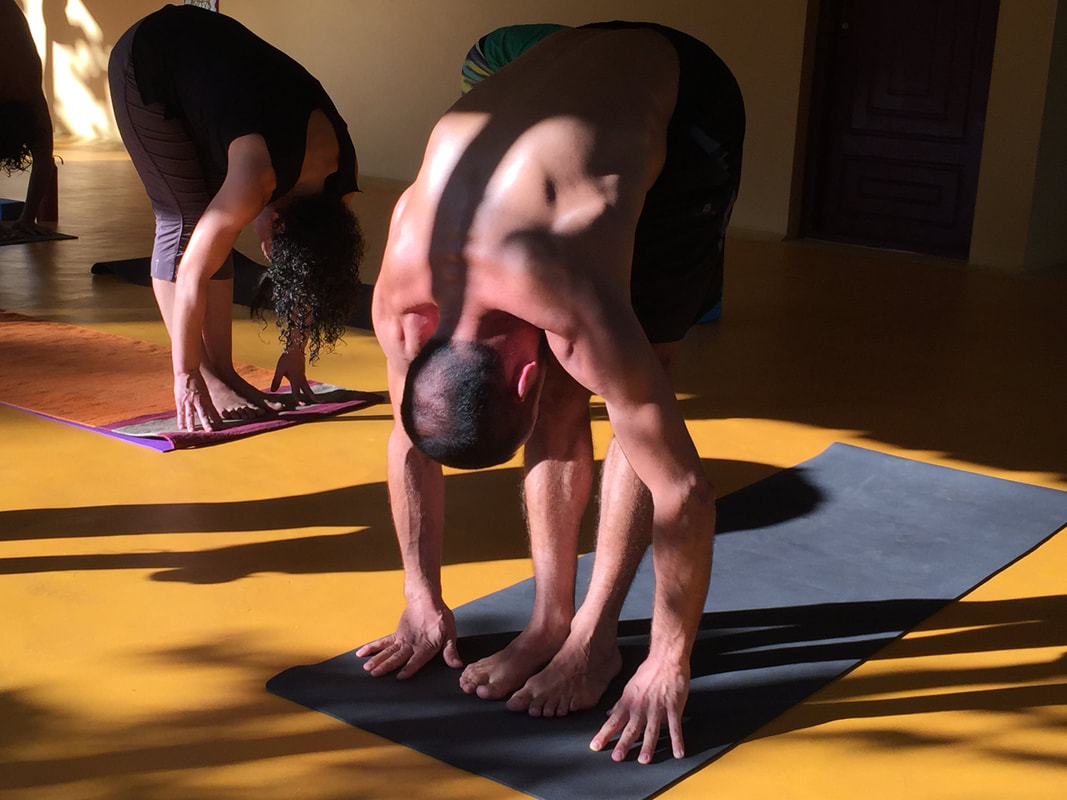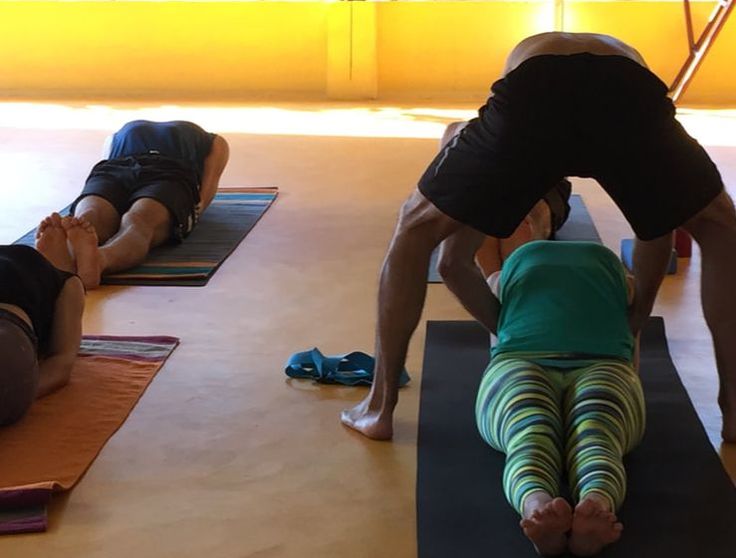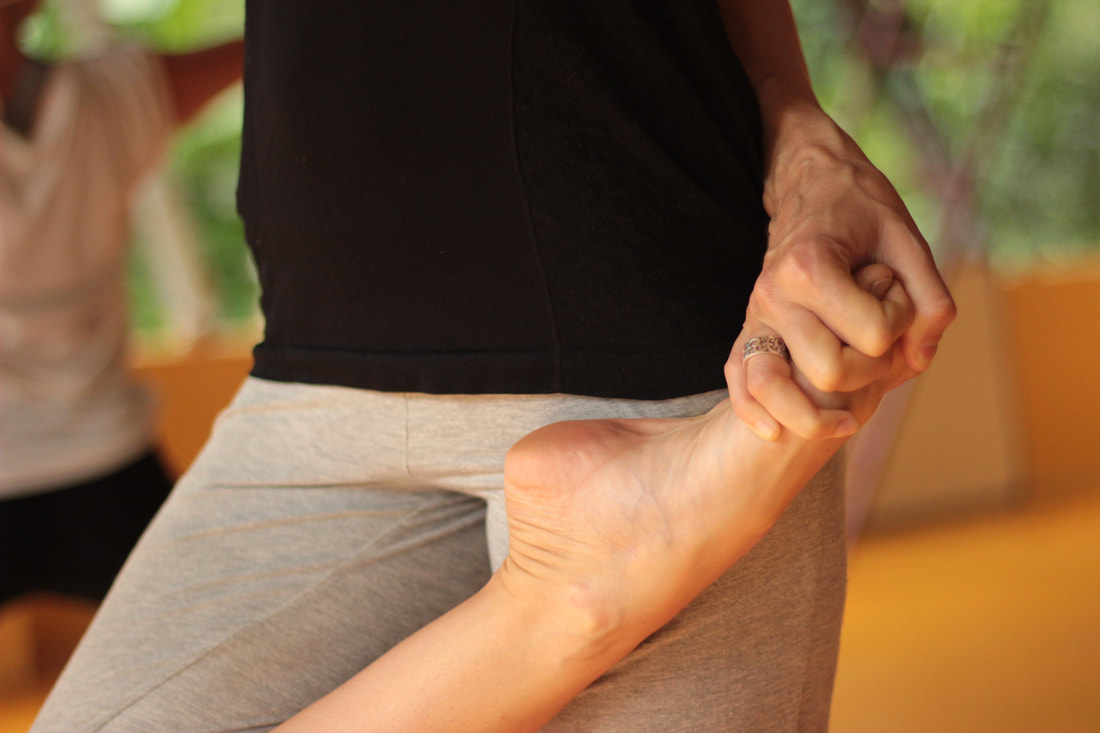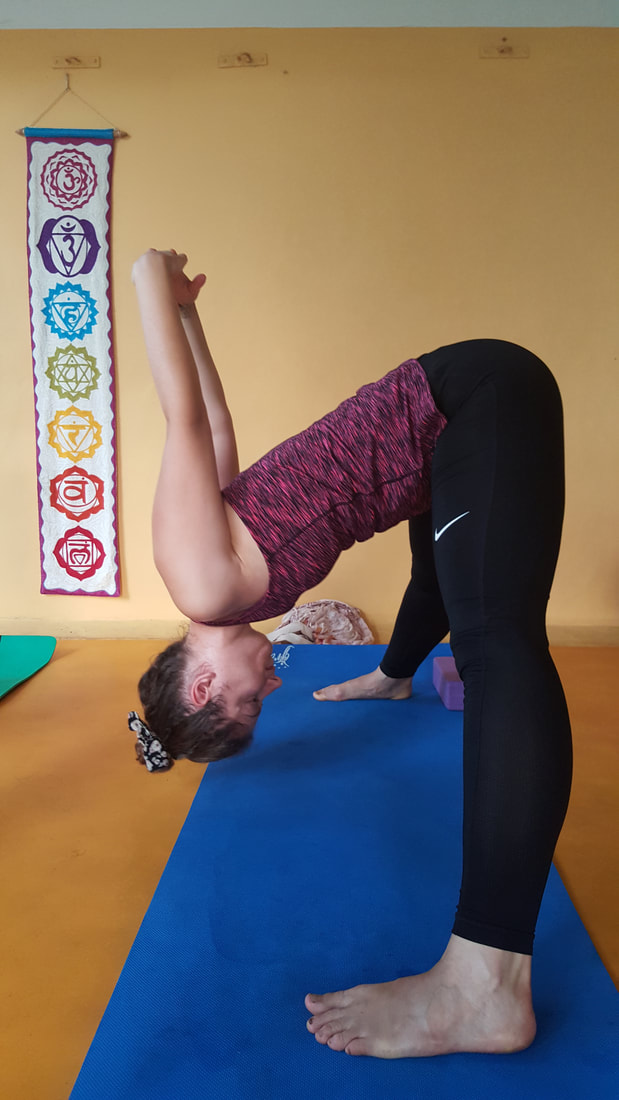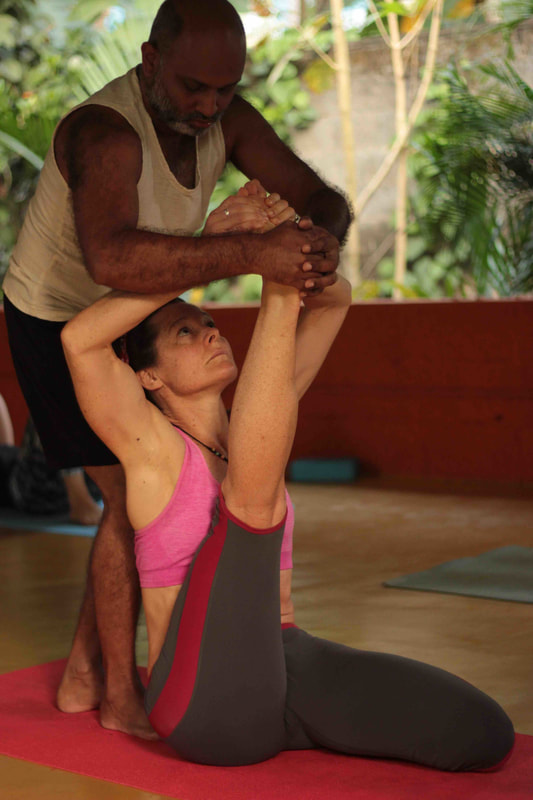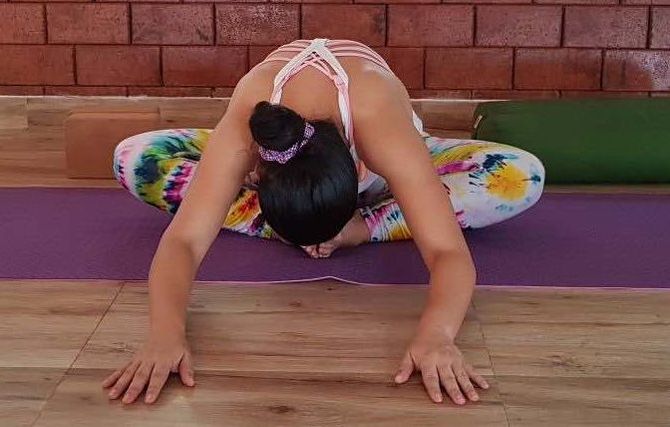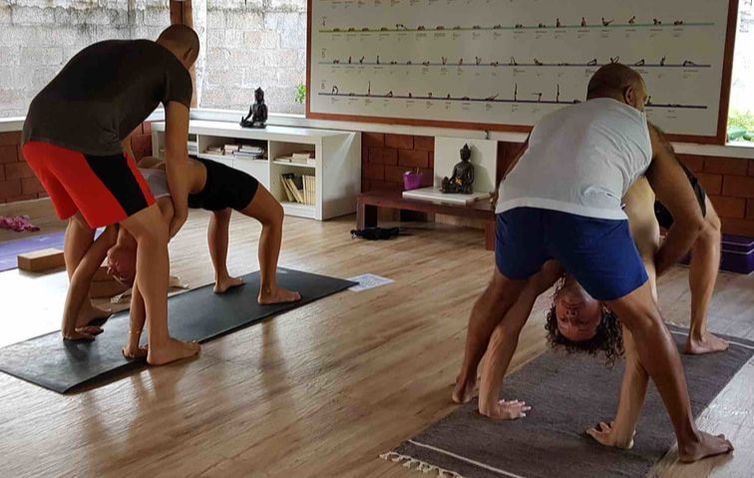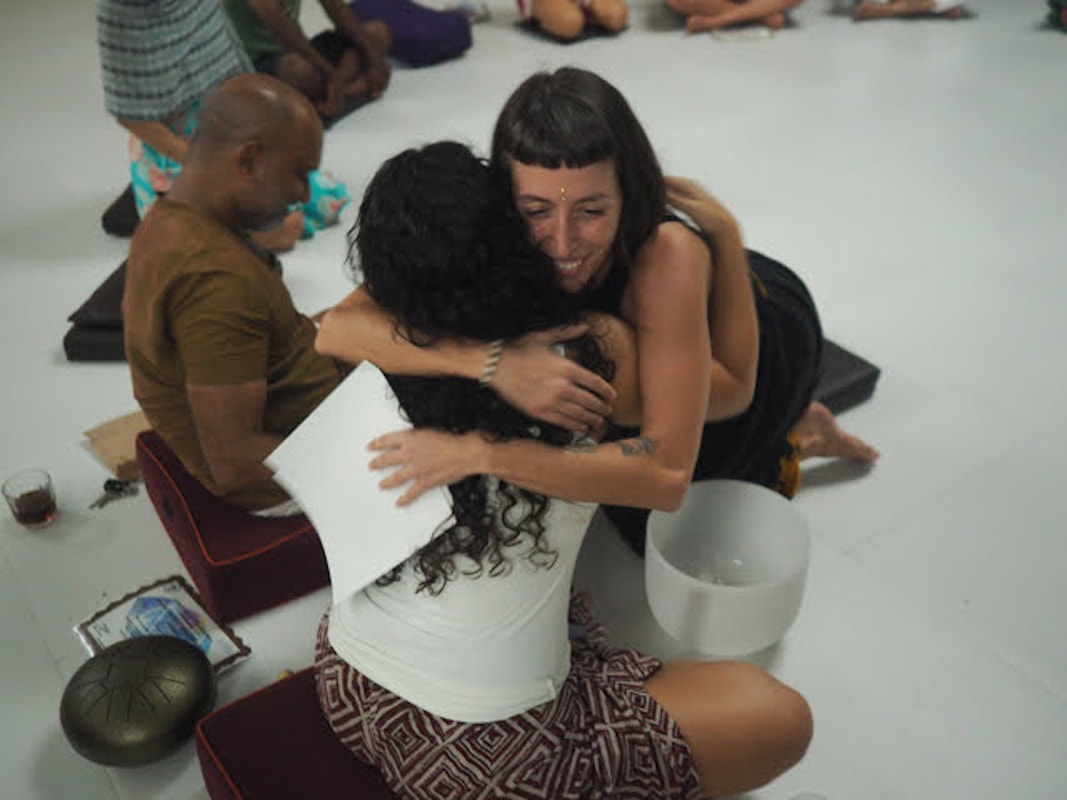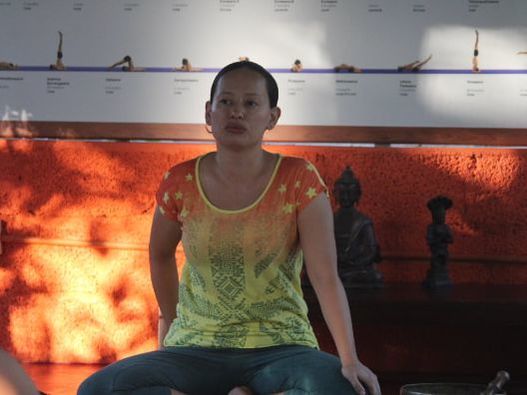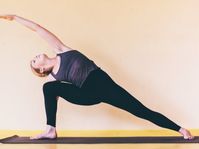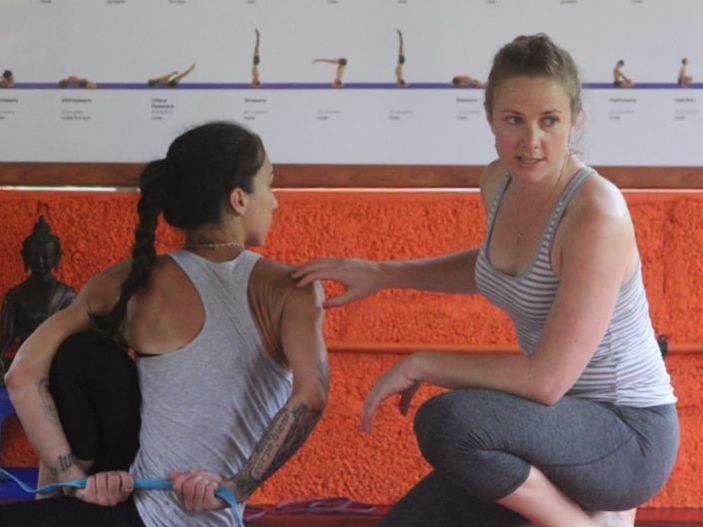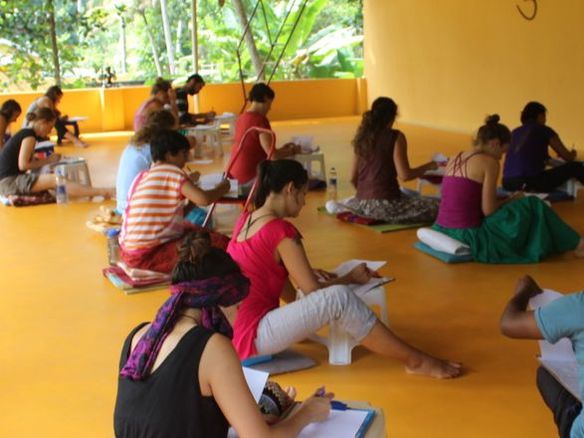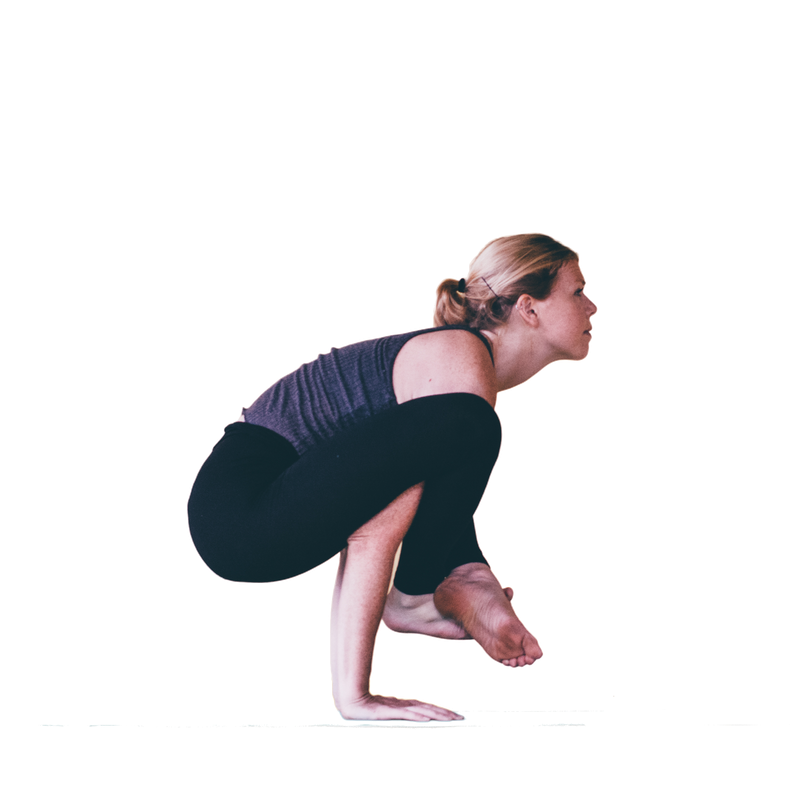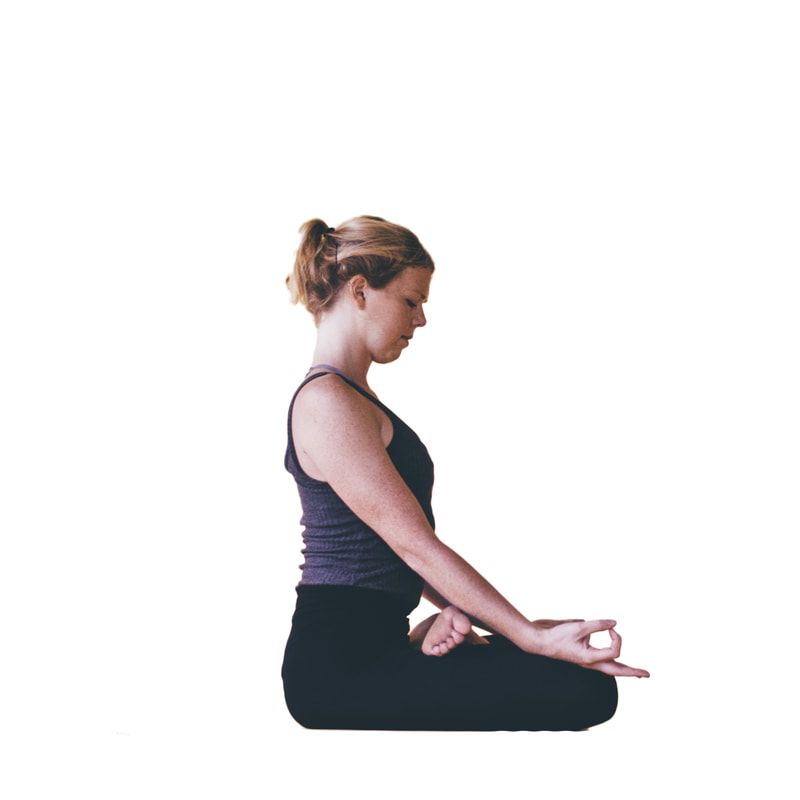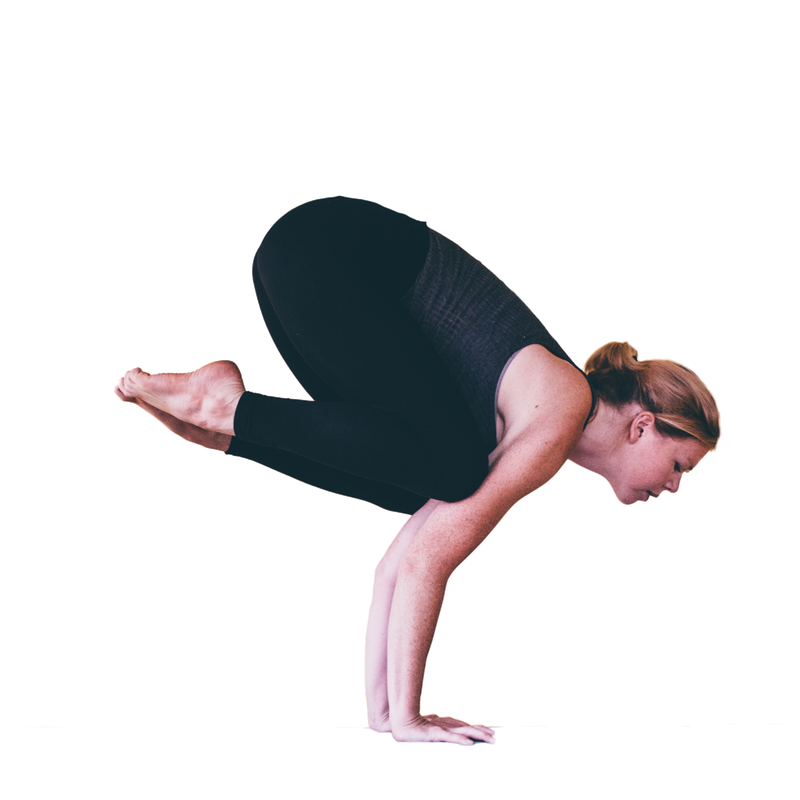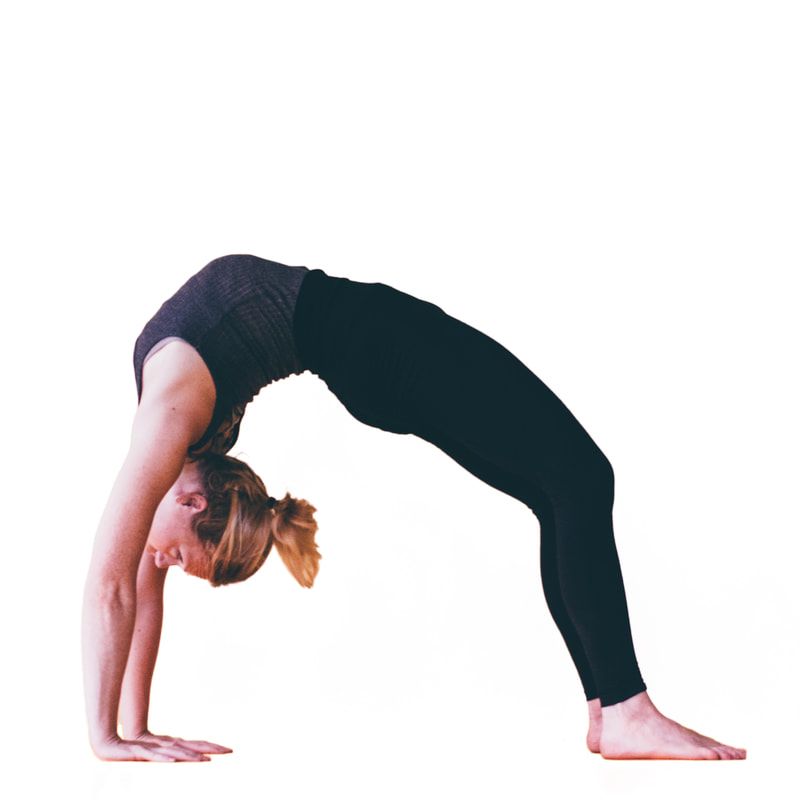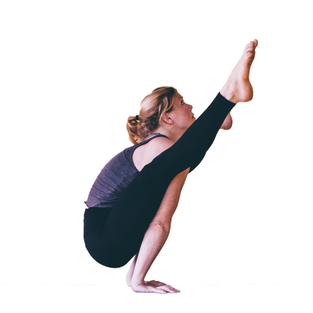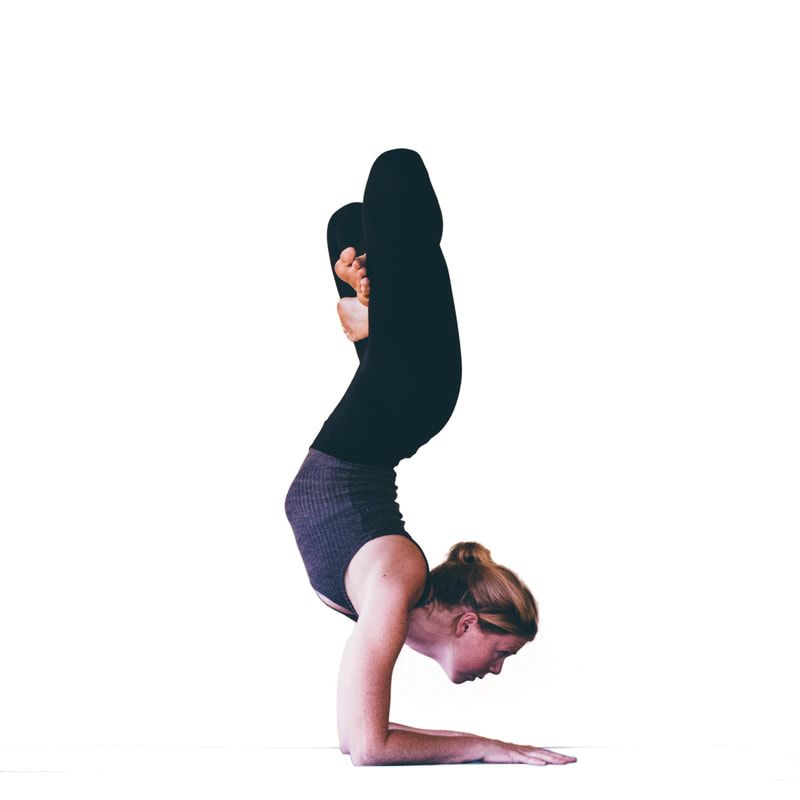200 HOUR VINYASA FLOW TEACHER TRAINING
FEB 7 - MAR 7, 2019 APR 23 - MAY 21, 2019
The course focuses on applying all the elements of vinyasa
into a unique connection with spirit,
this makes Abhijna's Vinyasa Flow TTC a one-of-a-kind program.
Victoria leader
|
Learn the Art of Vinyasa FlowWe draw our training on the essential teachings given by Krishnamacharya, where the practice of Asanas should be done in an Intelligent way known as Vinyasa Krama. We will use the breath and body to integrate the mind and adapt the body towards a state of flow and inner stillness within that flow.
Within each moment, there is an intelligent way of transitioning, the breath, the mind, the gaze and the movement are all linked to one another bringing awareness to the mind, bringing a symphony of union. |
about the program
build up the foundations
|
learn to
|
experience vinyasa krama:
|
Come to explore the Creativity and Freedom derived from Abhijna's 200 Hour Vinyasa Flow Teacher Training
The 200 Hour Vinyasa Flow Yoga Teacher Training Program provides yoga teachers the skills & knowledge necessary to work intelligently with students from all backgrounds & ages who wish to undergo a vinyasa flow practice that is safe and progressive allowing the practitioner to connect at a deeper level with his/her own self.
Six Essential Parts of Abhijna's Vinyasa Yoga Training
Become an Excellent Vinyasa Yoga Teacher through
the practice of these essential methods:
200 Hour Vinyasa Flow Teacher Training Syllabus
1. HISTORY OF YOGA
Learn the Ancient origins of Yoga as well as the modern exponents of this wonderful practice which is designed to increase the movement and fluidity of the body and the mind. We will delve into the principles of yoga from its Ancient origins dating back from Hatha Yoga Pradipika, Gheranda Samhita, and Yoga Sutras of Patanjali and they give the outline as well as the ground work for the practitioner to use them as preparations to go into deeper practices.
In the Modern Origins of we will take a close look at the main modern exponents of this wonderful practice and their influence in the practice of Vinyasa Flow to mention a few Krishnamacharya, David Swenson, Sean Corn, Jason Crandell among others.
In the Modern Origins of we will take a close look at the main modern exponents of this wonderful practice and their influence in the practice of Vinyasa Flow to mention a few Krishnamacharya, David Swenson, Sean Corn, Jason Crandell among others.
2. FOUNDATIONS OF VINYASA FLOW YOGA
- Definition of Vinyasa Flow Yoga
- Basic Principles and Concepts of Vinyasa Yoga
- Krama - Effective and wise progression within a yoga practice
- Prana and Breath - Deepening the force of inner energy through the breath
- Jivana Prayatna - Smooth and Long Breath
- Sthiram & Sukham - Stillnes and confort
- Prayatna Shaithilya - Relaxation of effort and efortless effort
- Anata Samapattibhyam - Focusing the Mind
3. the essential asanas of vinyasa yoga
- Essential Asanas for a Healthy Spine, a Healthy Body and Quiet Mind
- Standing Postures
- Forward Bending Postures
- Lateral Stretching Postures
- Back-bending Postures
- Inverted Postures
- Balancing Postures
- Surya Namaskara, the inspiration for one's practice
- We will learn different types of surya namaskara as well as learn how to build up from a surya into a full flow. This also involves a creative process of building up one's own set of surya namaskaras depending on the type of classes you want to provide your students.
4. building a vinyasa flow: the essence of sequencing
- Sequencing based on different approaches:
- Building a Vinyasa Krama Sequence from any Surya Namaskara
- Building from the Ground up (SUPTA to STITHI — from lying down to standing)
- Building from a Seated Posture to Standing (UPAVISTA to STITHI - from sitting to standing)
- Building from a prone or lying on the abdomen to standing or seating
- Increasing core strength, stamina and peaks through Vinyasa Krama
- Building from Standing Postures into Warriors or Sitting or Laying Down.
- Building from Downward Facing Dog
5. Learning how to flow
- Warm ups
- Preparatory Practices
- Build up postures
- Tap the essence of focus
- Finding your inner strength
- Learning to honor and respect your limits
6. Teaching how to flow
- Essential Sequences
- Introducing new postures
- Preparing for peak asanas
- Teaching on and off the mat
- Adjusting & Floor Management
7. structuring and systematizing vinyasa flow classes
- GIVING STRUCTURE
- Sequencing Warm ups.
- Sequencing Preparatory Practices.
- Sequencing for Beginners, Intermediate and Advanced Practitioners.
- How to challenge the flow: Sequencing depending on previous injuries and limitations.
- SYSTEMATIZING THE FLOW
- Learning to combine different asanas.
- Blocks of postures that can be used at any time.
- Blocks of postures that prepare for a particular movement (arm balances, inversions, forward bends, twists, standing, etc).
- Blocks of postures that can be used to close a series.
8. anatomy: safety aspects of the flow
- Risks and Contraindications.
- How to safely modify a posture or set of postures.
- When to avoid a particular posture or set of postures.
- Anatomically correct flow vs. anatomically dangerous flow.
9. pranayama & bandhas: the essence of the flow
- Essential Pranayamas
- Abdominal, Thoracic, Clavicular & Full Yogic Breath.
- Sama Vritti, Nadi Shodhana & Bramhari.
- Bhastrika & Kapalabhati
- Sheetali & Sheetkari
- Introducing pranayamas in a vinyasa flow setting.
- Using Pranayamas to warm up the body and create a peak in a class.
- Essential Bandhas
- Moola Bandha
- Uddhyana Bandha
- Jalandhara Bandha
- Using Bandhas to enhance the flow.
10. yoga philosophy: the foundation of the flow
- Introduction to Patanjali's Yoga Sutras
- The Disciple and the Discipline
- The Path and Meaning of yoga
- The modifications of the mind
- Establishing the Witness & The essence of practice
- The eight fold path
- The 7 chakras, The 5 Koshas and the 5 Pranas
- The Gunas
11. meditation techniques
Every day a different meditation technique is introduced. At Abhijna we understand that different people need different approaches towards meditation. For some it is easier to move the body first and then find stillness, for others, it is easy to find stillness within movement. Whichever your preferred style of meditation, you will learn to dive and open your mind to different techniques so that you can have a better understanding of dharana and dhyana techniques and therefore be of better guidance to your students. Some of the techniques include:
- Gourishankar and/or Trataka
- Be aware of who is sensing
- The forgotten language of the body mind
- Chakra Sounds and Chakra Breathing
- Kundalini
- Golden Light
- Vipassana
- Whirling
- Heart Meditation
12. asana methodology essentials
|
STANDING POSTURES
|
Redefining
|
Foundations of Asana and TransitionsAquire a strong asana foundation and learn how to build up as well as deepen your student's practice.
Essentials of TeachingTeach with confidence! Learn to give correct instructions so that there is a constant flow!
|
Applied Bandhas &
|
Learn how to structure and teach beginners, intermediate and advanced vinyasa flow
yoga practices thus helping you cater different groups and clients.
yoga practices thus helping you cater different groups and clients.
